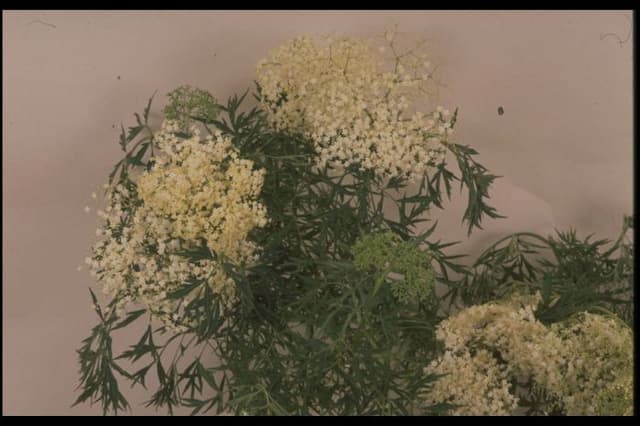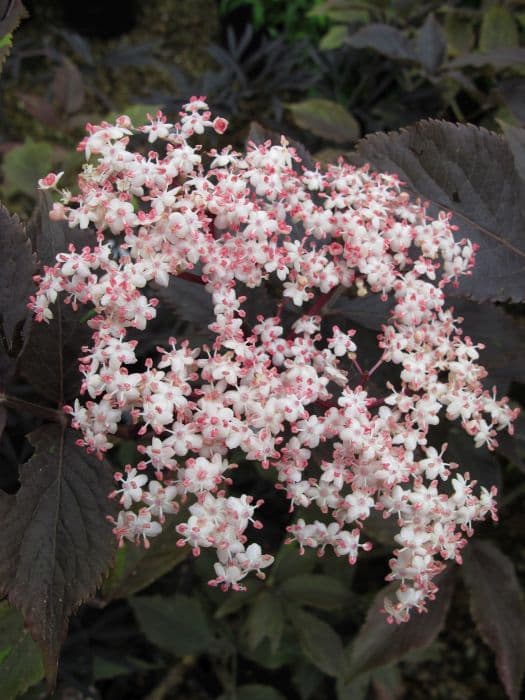Burkwood Viburnum Viburnum × burkwoodii

ABOUT
The plant commonly known as Burkwood Viburnum is a deciduous to semi-evergreen shrub that is known for its highly attractive appearance. This plant is adorned with glossy, ovate leaves that are rich green in color and have pronounced veining, lending a textured look to the foliage. The leaves can also take on reddish or purplish hues in the autumn, adding a touch of seasonal interest. One of the most striking features of Burkwood Viburnum is its fragrant flowers. These blossoms are typically small and tubular, with a white or pale pink color. They are arranged in dense, rounded clusters, known as inflorescences, which emerge in the spring. The delightful scent of the flowers adds to the plant's charm, often attracting butterflies and other pollinators to the garden. As the flowers fade away, the plant produces fruit which can range in color from red to black. These berry-like fruits are attractive to birds, which helps in seed dispersal. The overall shape of Burkwood Viburnum is somewhat rounded and bushy, with a dense growth habit that makes it an excellent choice for hedges, screens, or as a stand-alone specimen in a garden landscape.
About this plant
 Names
NamesFamily
Adoxaceae
Synonyms
Burkwood Viburnum, Burkwood's Viburnum
Common names
Viburnum × burkwoodii
 Toxicity
ToxicityTo humans
The Burkwood Viburnum is not considered highly toxic to humans. However, ingesting parts of the plant, particularly the berries, can potentially cause mild stomach upset, nausea, or vomiting. It is always advisable to avoid eating any part of ornamental plants not confirmed to be edible, due to the potential risks involved.
To pets
The Burkwood Viburnum is also not highly toxic to pets, but ingestion of parts of this plant, especially berries, may result in mild gastrointestinal upset. Symptoms could include vomiting or diarrhea if consumed in large quantities. As a general precaution, prevent pets from eating ornamental plants to avoid any potential health issues.
 Characteristics
CharacteristicsLife cycle
Perennials
Foliage type
Semi-evergreen
Color of leaves
Green
Flower color
White
Height
6-10 feet [1.8-3 meters]
Spread
6-10 feet [1.8-3 meters]
Plant type
Shrub
Hardiness zones
5-8
Native area
Cultivar
Benefits
 General Benefits
General Benefits- Aesthetic Appeal: Burkwood viburnum produces attractive, fragrant flowers in spring, adding beauty and charm to garden settings.
- Attracts Wildlife: The plant's flowers provide nectar for pollinators while its berries are a food source for birds.
- Privacy Screen: With its dense growth habit, it can be used as a natural screen or hedge, offering privacy and reducing noise pollution.
- Low Maintenance: It is generally easy to care for and does not require extensive upkeep once established.
- Year-Round Interest: Offers seasonal changes in color, from spring flowers to summer foliage, autumn berries, and winter structure.
- Tolerant of Different Conditions: Adapts to a range of soil types and can tolerate partial shade, increasing its versatility in landscaping.
 Medical Properties
Medical PropertiesThis plant is not used for medical purposes.
 Air-purifying Qualities
Air-purifying QualitiesThis plant is not specifically known for air purifying qualities.
 Other Uses
Other Uses- Viburnum × burkwoodii, commonly known as Burkwood Viburnum, can be used in perfumery due to its sweet and spicy clove-like fragrance emitted from its flowers. The scent is intense during the evening and can be processed into essential oils or fragrance products.
- Its dense, evergreen foliage makes it suitable for privacy screens or hedges in residential landscapes. It provides a natural boundary that is not only functional but also aesthetically pleasing.
- Burkwood Viburnum can be used as a specimen plant in ornamental gardens, showcasing its attractive flowers, berries, and fall foliage. It is often featured prominently due to its multi-season appeal.
- The berries can be used in floral arrangements as they provide a splash of red to black color among green foliage, making them a popular choice among florists for autumn decorations.
- Its robust structure offers shelter and nesting opportunities for birds, making it an excellent choice for wildlife gardens aiming to attract and support local bird populations.
- In educational settings, Burkwood Viburnum can be utilized as a teaching tool for botany and horticulture students, illustrating plant growth, pruning techniques, and hybrid plant characteristics.
- Its wood, although not commonly used, can be crafted into small wooden objects like handles for tools, given its firmness and resilience.
- As a natural focal point in a meditation or zen garden, the Burkwood Viburnum's serene appearance and fragrant blossoms can contribute to a calming and relaxing atmosphere.
- The plant can be implemented in sensory gardens, specifically cultivated for visitors to enjoy through scent, touch, and visual interest, thus engaging multiple senses.
- During winter, the evergreen leaves of Burkwood Viburnum can be gathered and used in seasonal wreaths and holiday decorations.
Interesting Facts
 Feng Shui
Feng ShuiThe Burkwood Viburnum is not used in Feng Shui practice.
 Zodiac Sign Compitability
Zodiac Sign CompitabilityThe Burkwood Viburnum is not used in astrology practice.
 Plant Symbolism
Plant Symbolism- Renewal: Viburnum × burkwoodii, also known as Burkwood Viburnum, often symbolizes renewal because it blooms in the spring, representing the awakening of nature and new beginnings.
- Protection: In some cultures, viburnum species are considered a symbol of protection because their dense growth habit can form a natural barrier against negative forces.
 Water
WaterBurkwood Viburnum should be watered deeply and thoroughly, allowing the soil to become moist but not soggy. Typically, you should water this plant once a week, providing around 1 to 1.5 gallons per watering for established plants. Adjust frequency depending on weather conditions; during very hot or dry periods, it may require watering twice a week, while in cooler, wetter weather, less frequent watering is necessary. It's important to ensure that the plant has well-draining soil to prevent root rot. Always check the soil moisture before watering to avoid overwatering.
 Light
LightBurkwood Viburnum prefers full sun to partial shade. The ideal spot provides morning sunlight with some afternoon shade, especially in hotter regions. In cooler climates, it can tolerate and indeed thrive in full sun throughout the day. Avoid deep shade, as this can reduce flowering and lead to leggy growth.
 Temperature
TemperatureBurkwood Viburnum is tolerant to a range of temperatures and can survive in zones 5 through 8, making it hardy to conditions as low as -20 to -10°F in the winter. The ideal temperature for vigorous growth and flowering falls between 60°F and 75°F. It's important to protect the plant from extreme cold by offering mulch or shelter if temperatures dip below its minimum threshold.
 Pruning
PruningBurkwood Viburnum benefits from pruning to maintain shape, encourage bushier growth, and remove any dead or diseased wood. The best time to prune is immediately after flowering to avoid cutting off next year's flower buds. Prune sparingly, as this plant usually maintains a nice shape naturally. Typically, a yearly pruning session is sufficient, but if rejuvenation is needed, more aggressive pruning can be done.
 Soil
SoilBurkwood Viburnum thrives in well-draining soil enriched with organic matter, with an ideal pH range of 5.6 to 6.6. A mix of loam, peat, and compost is recommended to provide the necessary nutrients and structure.
 Repotting
RepottingBurkwood Viburnum is typically planted outdoors and doesn't require repotting. In containers, young plants may be repotted every 2-3 years to refresh the soil.
 Humidity & Misting
Humidity & MistingBurkwood Viburnum is adaptable but prefers average humidity levels found in most outdoor environments; it doesn't have specific high humidity needs.
 Suitable locations
Suitable locationsIndoor
Ensure bright light, no direct sun, and ample space.
Outdoor
Plant in moist, well-drained soil, partial to full sun.
Hardiness zone
5-8 USDA
 Life cycle
Life cycleViburnum × burkwoodii, commonly known as Burkwood Viburnum, begins its life as a seed, often resulting from the cross-pollination between different Viburnum species. Upon germination, it develops a root system and a shoot that grows into a young seedling. As it matures, the plant develops woody stems and foliage, entering a vegetative stage where it focuses on growth and energy storage. Flower buds form during this period, typically in late winter to early spring. The plant blooms in spring, producing fragrant white flowers that attract pollinators; after successful pollination, these flowers develop into small red to black berries (drupes) by late summer or fall. The plant then enters a period of dormancy during cold months; it completes its life cycle when it either dies naturally after several years or is propagated by cuttings to produce new plants.
 Propogation
PropogationPropogation time
Spring-Early Summer
The most popular method of propagation for Viburnum × burkwoodii, commonly known as Burkwood Viburnum, is through semi-hardwood cuttings. This is typically done in late summer. To propagate by this method, one must select a healthy stem that has begun to mature but is not fully woody, and cut a section approximately 4 to 6 inches (10 to 15 centimeters) long. The lower leaves are removed and the cut end is dipped in rooting hormone to encourage root development. The cutting is then placed in a well-draining potting mix, ensuring that the leaf nodes where the leaves were removed are buried in the soil. The cutting should be kept moist and in a warm place with indirect light until roots have developed, which can take several weeks. Once the cuttings have rooted, they can be potted on or planted out in the garden.









